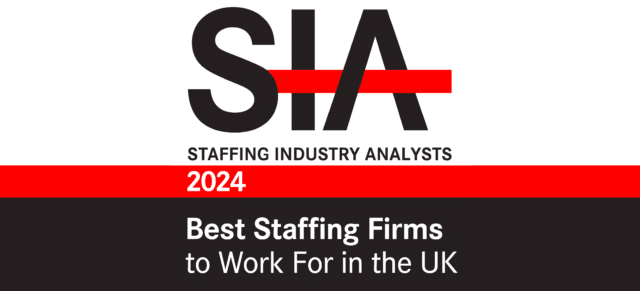

One of the biggest drains on the profits and resources of businesses in the UK is absenteeism, which most often comes as a result of staff sickness. Yet surprisingly, research suggests that only a minority of employers use sickness absence management software to monitor the situation and reduce that cost.
In 2020, for example, the pandemic was responsible for 14% of all sickness absences. Interestingly, measures such as furlough schemes, social distancing and increased working from home efforts reduced other causes of absences to a drastic degree. In fact, as a result, the UK sickness absence rate fell to 1.8% – its lowest level since 1995.
As the impact of the pandemic decreases and the more extreme methods of controlling the virus come to an end, we can expect a corresponding increase in the most common causes of workers calling in sick. That’s just one reason why businesses would be wise to take absence management very seriously if they haven’t been already.
Why is Absence Management Important?
Now more than ever, businesses need a workforce that they can rely on. With businesses in many sectors having to make up for lost time in the wake of forced closures and reduced turnover during the pandemic, employers need staff who are fit, healthy and raring to go.
Unfortunately, the statistics show that’s not always the case. According to the Chartered Institute of Personnel and Development, the average employee is absent for 6.9 days per year, costing employers £554 per worker.
So the financial cost of sickness absence is clear, but that still only tells part of the story. This is because the greater cost will often come in the form of workplace disruption and a certain level of damage to team morale, motivation and productivity – especially those who then need to cover the extra work. That’s why it’s so important for businesses to implement strategies to tackle absenteeism.
Absence management is the name given to the policies, procedures and software that is used to reduce the impact of employee absenteeism. It should include all of the following:
- Supporting employees with health issues to stay in or return to work
- Focusing on employee wellbeing and mental health to try to prevent genuine and non-genuine absences from occurring
- Supporting people to balance work in a way that minimises the impact on their health
- Developing effective return-to-work programmes and offering flexible working where possible
- Taking firm and consistent action in the minority of cases where employees abuse businesses’ sick pay schemes
- Having flexible workforce management solutions in place so staff can be replaced quickly to reduce the impact on productivity
What Are the Benefits of Absence Management Software?
With the vast amount of absences through sickness being genuine, employers must accept that a certain amount of absenteeism is inevitable. That’s why they must consider the steps that they can take to mitigate the impact on their business.
Absence management software has a key part to play in this – here’s why.
-
It safeguards your business
The smaller your team, the more everyone depends on each other and the harder you’ll be hit by any unplanned absences. When you’re already at full capacity and employees have to pick up another worker’s tasks, something has to give. The biggest casualty comes in the form of lower productivity, higher stress levels or a reduction in the quality of the work – none of which are desirable.
Having an absence management system in place allows you to better understand your team’s absence record and lets you set about resolving any problems before they impact your business. The software can also help employers to predict absenteeism rates based on seasonal or annual trends, which can be built into your workflows. Those figures can also be plotted against production levels to reveal whether more workers are likely to be needed for a shift.
-
It reduces absenteeism
As well as safeguarding your business when illness does occur, absence management software can go one step further and actually reduce the number of absences in the first instance.
When employees know that you’re monitoring and reporting on every absence, it may make them think twice about taking time off when they are not genuinely unwell.
Having an at-a-glance overview of sickness absences will also allow you to identify evolving patterns of behaviour. For example, if a high-performing employee is taking more days off than usual due to sickness, it may be time to schedule a one-to-one to discuss the causes of this behaviour.
This can also go towards uncovering some issues that may not be easily noticed, especially in this era of increased remote working. Say an employee is suffering from workplace stress or is dealing with difficulties in their personal life. A conversation can not only uncover this but give you the opportunity to discuss any steps you can take, such as offering more flexible hours or reducing their workload, to better accommodate them.
-
It helps you to understand your absence trends
Absence management software can give you a graphic view of the absences in your business, helping you to visualise trends and patterns that you may not otherwise have identified.
The software may reveal that the rate of absences increases in November, which is statistically the worst month of the year for unplanned absences in the UK. You can then use that information to make changes that may make absences less likely during that month.
For example, you may choose to introduce a home working policy to keep employees away from the cold and flu bugs that are rife at that time of year. Alternatively, you could increase your staffing levels to reduce workloads and stress levels in the lead up to Christmas.
What is Best Practice for Absence Management?
Every business must determine its own standards for sickness absences and produce an absence management policy that clearly details this information to employees.
The policy should outline a fair and consistent process to help managers deal with absences and let employees know how they might be tracked and what will be expected of them regarding fit notes from doctors, self-certificate forms, return-to-work interviews and more.
An absence management policy should include:
- Terms of contractual sick pay and details of when statutory sick pay comes into effect
- When, how and who employees should notify when they are not able to attend work due to sickness
- When employees need to fill in a self-certificate form
- When employees need to provide a fit note from their doctor
- Details of how employees are tracked and how any review or point system operates
- Provisions for return-to-work interviews
- Details of adjustments that can be made to help employees return to work as soon as is practicable
- A provision that the organisation reserves the right to ask employees to attend an examination carried out by an occupational health professional and to request a report from the employee’s doctor (with the individual’s consent)
- Guidance on absences during unexpected or major events such as the pandemic, heavy snow and popular sporting events such as the World Cup
A comprehensive absence management policy is a great starting point, but it’s beneficial if you also have a solution in place that can help with the practical implementation of that policy. That’s where absence management software comes in.
It allows you to keep an accurate record of employee absences effortlessly and automate many of the routine HR and payroll tasks associated with sickness absences to remove the risk of errors. It can also be integrated with workforce management solutions to help you build a pool of flexible workers who can cover unexpected absences so your business doesn’t suffer.
Don’t Let Sickness Absences Hold You Back
Indeed Flex’s workforce management solution is an important part of developing your absence management best practices. It gives you the flexibility to hire temporary staff as and when you need them without having to place last-minute calls to recruiters.
You can fill rota gaps by choosing from a pool of flexible workers, so you always have the personnel you need to perform. It also automates laborious administrative HR tasks, leaving no room for error with digital compliance.
Request a demo today to see how Indeed Flex can mitigate the risks associated with unplanned absences and give you immediate access to more than 44,000 flexible workers.








